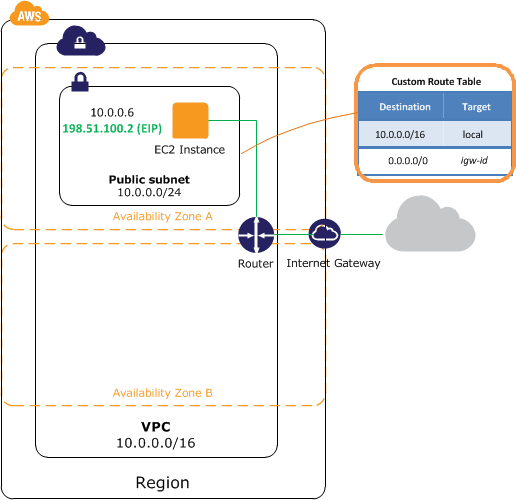Microsoft Certified: Azure Solutions Architect Expert Certification Questions and Answer (Dumps and Practice Questions)
Question : You manage a set of virtual machines (VMs) deployed to the cloud service named fabrikamVM. You configure auto scaling according to the following parameters:
With an instance range of two to six instances To maintain CPU usage between 70 and 80 percent To scale up one instance at a time With a scale up wait time of 30 minutes To scale
down one instance at a time With a scale down wait time of 30 minutes You discover the following usage pattern of a specific application:
The application peaks very quickly, and the peak lasts for several hours. CPU usage stays above 90 percent for the first 1 to 1.5 hours after usage increases. After 1.5 hours, the
CPU usage falls to about 75 percent until application usage begins to decline. You need to modify the auto scaling configuration to scale up faster when usage peaks. What are two
possible ways to achieve this goal? Each correct answer presents a complete solution.
A. Decrease the scale down wait time.
B. Decrease the scale up wait time.
C. Increase the number of scale up instances.
D. Increase the scale up wait time.
E. Increase the maximum number of instances.

1. memory
2. A,B
3. Access Mostly Uused Products by 50000+ Subscribers
4. C,D
5. A,D
Correct Answer : Get Lastest Questions and Answer :
Question : Your company network has two physical locations configured in a geo-clustered environment. You create a Blob storage account in Azure that contains all the data
associated with your company. You need to ensure that the data remains available in the event of a site outage. Which storage option should you enable?

1. Locally redundant storage
2. Geo-redundant storage
3. Access Mostly Uused Products by 50000+ Subscribers
4. Read-only geo-redundant storage
Correct Answer : Get Lastest Questions and Answer :
Explanation: https://msdn.microsoft.com/en-us/library/azure/dn727290.aspx
Read-access geo-redundant storage maximizes availability for your storage account, by providing read-only access to the data in the secondary location, in addition to the
replication across two regions provided by GRS. In the event that data becomes unavailable in the primary region, your application can read data from the secondary region.
Geo-redundant storage (GRS). Geo-redundant storage is enabled for your storage account by default when you create it.
4 better - data is immediately available when failure occurs. 2 can take hours before made available.
Question : You develop a set of Power Shell scripts that will run when you deploy new virtual machines (VMs).
You need to ensure that the scripts are executed on new VMs. You want to achieve this goal by using the least amount of administrative effort. What should you do?

1. Create a new GPO to execute the scripts as a logon script.
2. Create a SetupComplete.cmd batch file to call the scripts after the VM starts.
3. Access Mostly Uused Products by 50000+ Subscribers
4. Load the scripts to a common file share accessible by the VMs.
5. Set the VMs to execute a custom script extension.
Correct Answer : Get Lastest Questions and Answer :
Explanation: After you deploy a Virtual Machine you typically need to make some changes before it's ready to use. This is something you can do manually or you could use
Remote PowerShell to automate the configuration of your VM after deployment for example. But now there's a third alternative available allowing you customize your VM: the
CustomScript extension. This CustomScript extension is executed by the VM Agent and it's very straightforward: you specify which files it needs to download from your storage account
and which file it needs to execute. You can even specify arguments that need to be passed to the script. The only requirement is that you execute a .ps1 file. Reference: Customizing
your Microsoft Azure Virtual Machines with the new CustomScript extension
In a nutshell, Custom Script Extension can automatically download scripts and files from Azure Storage and launch a PowerShell script on the VM which in turn can install additional
software components. And just like with any other VM Extension, this can be added during VM creation or after the VM has been running. Sounds simple, yet very useful
http://azure.microsoft.com/blog/2014/04/24/automating-vm-customization-tasks-using-custom-script-extension/
Related Questions
Question : You work for a company named ABC.com. Your role as Cloud Administrator includes the management of the company's public and private cloud infrastructure.
The company has virtual machines running in a Windows Azure subscription. The VMs are in a virtual network named TK-VirNet1.
The company has several Customer Service Managers who often work away from the office at customer sites, at public locations such as coffee shops or from home.
You need to enable the Customer Service Managers to access the Azure virtual network when they are working remotely.
You plan to enable P2S (Point-to-Site) connectivity on TK-VirNet1 to enable the Customer Service Managers to access the virtual network.
Which of the following actions is required when configuring P2S (Point-to-Site) connectivity?

1. An additional virtual network is required.
2. A gateway subnet is required.
3. A VPN subnet is required.
4. A Windows server running Routing and Remote Access is required.
Question : You work for a company named ABC.com. Your role as Cloud Administrator includes the management of the company's Microsoft Azure subscription.
The company has a Development department. Developers have created 10 websites. You plan to host the websites on Azure.
You need to determine which Azure web tier plan to host the websites. The web tier plan must
meet the following requirements:
.The websites will use custom domains.
.The websites each require 10 GB of storage.
.The websites must each run in dedicated compute instances.
.Load balancing between instances must be included.
.Minimize costs.
Which web tier plan should you use?

1. Standard
2. Basic
3. Free
4. Shared
Question : You work for a company named ABC.com. Your role as Cloud Administrator includes the management of the company's Microsoft Azure subscription.
The company has a website hosted in Microsoft Azure Websites. The website is named CorpSite and is accessed using the URL corp.ABC.com.
CorpSite is running in a standard hosting plan. Company developers have released some updated functionality for the corp.ABC.com website.
You need to deploy and test the changes to the website. You need to be able to deploy the changes, test the changes and roll back the changes if required while minimizing
downtime of the corp.ABC.com website.
Which of the following actions should you perform before deploying the changes?

1. Change the name of the website to Staging.
2. Create a deployment slot named Staging and select the clone configuration option.
3. Add monitoring metrics on the Monitoring tab of the website.
4. Create a new website named Staging.
Question : You work for a company named ABC.com. Your role as Cloud Administrator includes the management of the company's Microsoft Azure subscription.
The company has a website hosted in Microsoft Azure Websites. The website is named TK-Portal and is accessed using the URL portal.ABC.com. TK-Portal is running in the shared tier
hosting plan.Portal.ABC.com is used by all company users. Users complain that the portal website runs slowly during peak usage times. You need to configure the website to prevent it
slowing down during peak usage times. Which two of the following actions should you perform?
A. Increase the instance size to Large.
B. Modify the tier of the website.
C. Enable automatic scaling based on CPU utilization.
D. Purchase a new Azure subscription.
E. Add a deployment slot.

1. A,B
2. B,C
3. C,D
4. D,E
5. E,F
Question : You work for a company named ABC.com. Your role as Cloud Administrator includes the management of the company's Microsoft Azure subscription.
The company has a website hosted in Microsoft Azure Websites. The website is named CorpSite and is accessed using the URL corp.ABC.com. CorpSite is running in a standard hosting
plan. Users report errors when accessing the website during peak times. You want to view the https logs as they occur during peak times to troubleshoot the issue.
Which of the following PowerShell cmdlets would you use to start log streaming for the http logs?

1. Get-AzureWebSiteLog -Name Corpsite -Tail -Path http
2. Get-AzureWebSiteLog -Name http -Tail Corpsite
3. Get-AzureWebSiteLog -String Corpsite -Name http
4. Get-AzureWebSiteLog -Name Corpsite -Output http
5. Get-AzureWebSiteLog -Name Corpsite -Tail -Message http
Question : You work for a company named ABC.com. The company has a branch office in Miami. The Miami branch office has users. Your role as Cloud Administrator includes the
management of the company's Microsoft Azure subscription. The company has a Development department. Developers have created a portal website using ASP .NET 4.0 for the Miami users.
The website will be publicly accessible and used by the Miami users to retrieve customer and product information. The website is currently running in an on-premise test environment.
You plan to host the websites on Azure. You need to determine which Azure web tier plan to host the websites. The web tier plan must meet the following requirements:
.The website will use the Miami.ABC.com URL.
.The website will be deployed to two instances.
.SSL support must be included.
.The website requires 12 GB of storage.
.Costs must be minimized.
Which web tier plan should you use?

1. Standard
2. Basic
3. Free
4. Shared